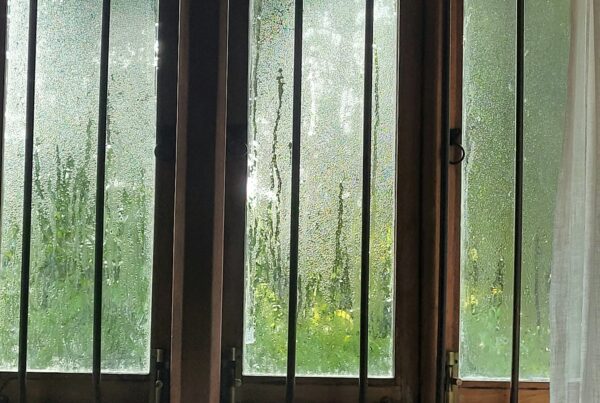Basement tanking and basement waterproofing are two approaches to protecting below-ground spaces from water ingress. Understanding these protection methods helps you choose the best solution for your property’s needs and budget.
In this article, discover key differences between tanking and waterproofing systems, learn about Type A, B, and C protection methods, understand costs, and explore which approach works best for different scenarios.
What Is the Difference Between Basement Tanking and Basement Waterproofing?
Although the terms basement tanking and basement waterproofing are used interchangeably, they are distinct approaches to below-ground water protection.
Basement tanking traditionally refers to Type A waterproofing systems that create a complete barrier preventing water penetration. These systems use waterproof membranes, renders, or structural waterproofing additives to form an impermeable barrier.
Basement waterproofing encompasses Type A (barrier), Type B (structural), and Type C (drained cavity) systems. This approach allows specialists to choose a suitable protection method based on site conditions, water pressure, and intended use.
The basement waterproofing specialists at Refresh Property Services and Consultants assess each property individually to recommend the most effective protection system.
What Are the Types of Basement Waterproofing Systems?
Modern basement waterproofing systems fall into three categories, each designed for specific conditions and performance requirements.
Type A Waterproofing Systems (Barrier Protection)
- Waterproof membranes – External or internal membrane systems creating complete water barriers
- Structural waterproofing – Concrete additives and waterproof renders forming integral protection
- Crystalline systems – Self-healing concrete treatments that block water penetration
- Cementitious coatings – Rigid waterproof coatings applied to basement walls and floors
Type A waterproofing provides the highest protection level but requires perfect installation and ongoing maintenance. Any barrier failure can result in water ingress.
Type B Waterproofing Systems (Structurally Integral)
Type B systems rely on the basement structure to resist water penetration through reinforced concrete construction. These work best in new construction where structural waterproofing integrates from the design stage.
Type B waterproofing requires high-quality concrete with appropriate thickness and reinforcement to withstand hydrostatic pressure.
Type C Waterproofing Systems (Drained Protection)
- Cavity drain membranes – Profiled membranes creating drainage cavities behind protective barriers
- Sump and pump systems – Controlled water collection and removal from basement spaces
- Perimeter drainage – Internal drainage systems capture and direct water away from habitable areas
Type C waterproofing accepts some water ingress but manages it effectively through controlled drainage. This approach suits retrofit applications and variable ground conditions.
Which Basement Protection System Should You Choose?
System selection depends on site conditions, water pressure, intended use, budget, and maintenance requirements. New construction projects incorporate Type B structural waterproofing more easily than retrofit applications. Type A systems work well where absolute water exclusion is required, such as archive storage or sensitive equipment areas.
Type C systems are ideal for residential cellar conversions. They offer acceptable moisture management and maintenance access, and work effectively in challenging ground conditions.
Properties with high water tables, poor drainage, or variable ground conditions benefit from Type C systems that manage water ingress rather than attempting complete exclusion.
What Are the Advantages and Disadvantages of Each System?
When properly installed and maintained, Type A systems provide complete water exclusion. They work well for high-value applications needing dry conditions. However, they require perfect installation and essential ongoing maintenance.
Type C systems are more forgiving of installation variations and ground movement. They work effectively in challenging conditions with easier maintenance access. However, they require ongoing pump and drainage maintenance and may not suit applications that require dry conditions.
Can Basement Protection Systems Be Combined?
Modern basement waterproofing uses hybrid approaches, combining different system types for optimal performance. These integrated solutions offer enhanced protection and redundancy.
Combining Type A and Type C systems creates primary and secondary protection levels. The Type A barrier provides initial water exclusion while Type C manages any breakthrough water safely.
How Do You Maintain Different Basement Protection Systems?
Type A systems need regular inspection for cracks, damage, or deterioration that could compromise the water barrier. Any defects require immediate repair.
Type C systems require regular pump testing, drain cleaning, and membrane inspection. Mechanical components must be serviced annually to prevent system failure.
Expert Basement Protection Solutions from Refresh Property Services
Choosing between basement tanking systems and waterproofing approaches requires a professional assessment of your site conditions and requirements. Experienced specialists at Refresh Property Services and Consultants (Refresh PSC) offer tailored protection solutions that provide long-term reliability.
Our approach includes evaluating all system types to recommend the most appropriate basement tanking systems or waterproofing solutions. We combine proven methodologies with quality materials to deliver guaranteed protection backed by extensive experience.
Contact us for a professional basement waterproofing assessment and expert support.



